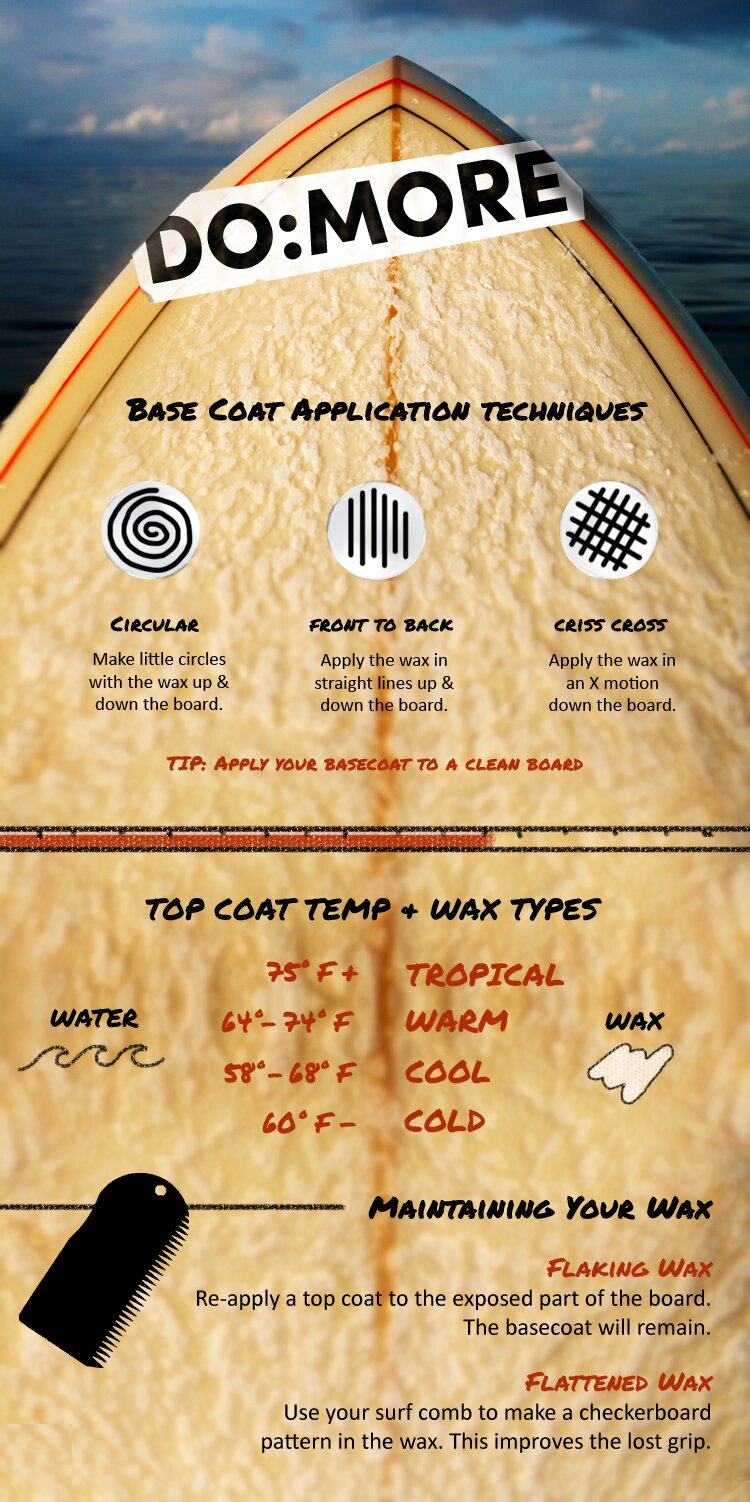
A Surf Wax Infographic by The Adrenalist, powered by Degree Men
Before hitting the waves this summer, take a look at our surf wax infographic to know exactly what you need to do for perfect upkeep of your board.
Surf wax is a simple enough petroleum product with a storied past. In the early days of the sport, surfers used to paint their boards with varnish and scatter sand across the surface to ensure they wouldn’t slip off. This gritty solution was imperfect and painful, leading to an epidemic of wipeouts and board burns. An improvement came by accident in 1935 when L.A. surfer Alfred Gallant Jr. walked through a recently waxed wood floor and found he stuck better than ever to his board. Surfing would never be the same.
Today, surfers wax their boards with two layers of surf wax: base coat and top coat. The base coat glues the board to the top coat, and the top coat glues the rider to the board. Top coat is considerably softer than base coat. It’s made to melt around a rider’s foot and stick into the contours of his or her skin. If a top coat is too soft for the conditions, however, it will begin to degrade. For this reason, top coat surf wax comes in four flavors of hardness: cold, cool, warm, and tropical. Use cold water wax if you’re surfing off the coast of Oregon. Use tropical if you’re surfing in French Polynesia.
Pick the right surf wax and properly maintain your board, and you’ll stay stuck to waves better and longer than the next guy in the water. Every edge counts. If you liked the infographic please feel free to share. DO:MORE by being properly prepared.








